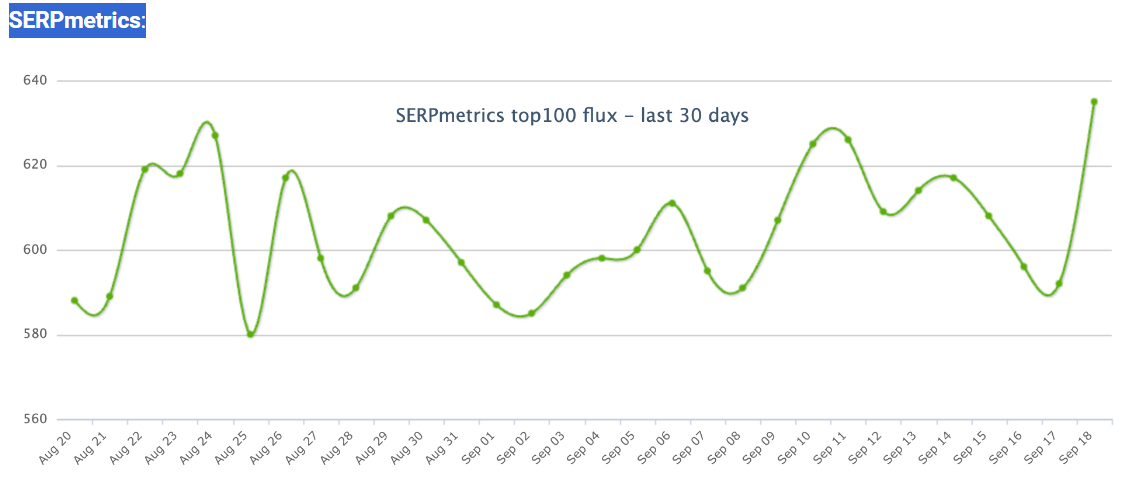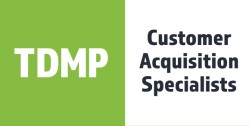Despite a relatively quiet end to Q3, there were still some important search industry developments in September. Read on for a breakdown of key updates that could influence your digital strategy.
Google Search
August core algorithm update completed
Google’s August 2024 core algorithm update finished rolling out in early September. It focused on helping some of the smaller websites hit by September 2023's Helpful Content Update recover visibility.
A handful of these sites did initially show signs of recovery, although many have since regressed to their pre-update position on the SERPs.
Learn more in our full August 2024 core algorithm update overview.
96% of citations in AI Overviews are for informational pages
A recent study revealed that 96% of citations in Google’s AI Overviews are for informational pages.
Below is the full breakdown of cited page intents in AI Overviews:
- Informational: 96.5%
- Informational/Transactional: 1.79%
- Transactional: 1.2%
- Navigational: 0.4%
- Informational/Navigational: 0.07%
- Informational/Navigational/Transactional: 0.01%
- Navigational/Transactional: 0.00
- Local/Informational: 0.00%
The informational percentage may not stay so high, especially as Google tries to find a balance between meeting user and publisher needs.
But it’s likely informational content will always hold the majority, meaning creating more high quality content to meet informational intent is and will continue to be a great way to build visibility in these responses at the top of Google’s SERPs.
The two most common approaches to building informational resources are:
1. Starting a blog – If you’ve been on the fence about starting a blog for your business, this news may be the deciding factor. Blogs are one of the most versatile and widely-used spaces for informational content on a website — and they’re great for SEO, too!
2. Building a resource hub – Having a dedicated section on your website for whitepapers, case studies, FAQs, and glossaries can cater to various informational intents.
New restrictions for Google Business Profiles with fake reviews
Google has introduced new restrictions for Business Profiles featuring inauthentic customer reviews.
Any reviews that conflict with Google’s “Fake Engagement” spam policy (which also pertains to incentivised reviews) may now lead to the following Business Profile penalties:
- Temporary suspension of new reviews or ratings.
- Removal of existing reviews for a set duration.
- Displaying a warning on profiles indicating that fake reviews have been removed, as pictured in the screenshot below:

Google updates their indexing API quota and pricing documentation
Google has revised its indexing API quota and pricing documentation to clarify usage limits and how to request more than the default.
For the uninitiated, the indexing API allows website owners to notify Google directly when specific pages are added, updated, or removed. This results in faster indexing for dynamic sites like job boards or event listings.
The updated text shows that the limit for requests per minute is 380 per project. This has always been the case, despite the document initially giving 600 as the maximum.
Continued SERPs volatility
Ranking volatility that started way back in July continued in September, potentially linked to the August 2024 core algorithm update.
As noted by Search Engine Roundtable’s Barry Schwartz, the volatility spiked on the 6th, 10th, 14th, and 18th of September.

As the instability continues into October and shows no signs of cooling, it may well turn out to be the longest period of volatility to date.
Google refresh their spam policy documentation
Google made several adjustments to their spam policy documentation in September. The most notable change focused on clarifying the term “first-party oversight” in a section on site reputation abuse.
The introduction remains unchanged, stating:
‘Site reputation abuse is when third-party pages are published with little or no first-party oversight or involvement, where the purpose is to manipulate search rankings by taking advantage of the first-party site's ranking signals. Such third-party pages include sponsored, advertising, partner, or other third-party pages that are typically independent of a host site's main purpose or produced without close oversight or involvement of the host site.’
But this is now followed by:
‘Close oversight or involvement is when the first-party hosting site is directly producing or generating unique content (for example, via staff directly employed by the first-party, or freelancers working for staff of the first-party site). It is not working with third-party services (such as "white-label" or "turnkey") that focus on redistributing content with the primary purpose of manipulating search rankings.’
Another smaller change was made to explicitly state that manual action consequences can include the removal of websites (or parts of) from their index.
Google also condensed the document, simplifying sections to make statements more direct and digestible.
Paid media
Google takes a big step to boost customer privacy in Google Ads
Google Ads is taking significant strides to bolster customer privacy through a process called confidential matching.
Now, any first-party data connected to Google Ads for Customer Match will be stored in a trusted execution environment (TEE), which is essentially a safe for information.
Google’s existing data is also included in this environment.
The TEE then matches up your first-party information with what Google already knows, and only lets Google see the matched, relevant data. Everything else stays in the TEE, significantly reducing data harvesting.
Once matching is complete, you receive “attestation” which serves as confirmation that privacy has been protected.
For advertisers, this means we can stay on the right side of privacy legislation while still seeing the full picture of campaign performance.
Google has uploaded the code for this process onto GitHub, meaning it may become standard across other platforms.
Google to sunset enhanced cost-per-click (eCPC) for Google Ads
In March 2025, Google will sunset the enhanced cost-per-click (eCPC) bidding strategy. Campaigns using eCPC at this juncture will automatically transition to manual CPC bidding.
The decision stems from Google's belief that eCPC lacks the sophistication of newer machine-learning-based bidding strategies.
New "target cost-per-lead" bidding strategy for Google Ads
Google Ads is also rolling out a new target cost-per-lead (tCPL) smart bidding strategy. This approach allows advertisers to set a desired average cost for leads, while the semi-automated bidding system aims to maximise lead generation whilst sticking to that average.
Some leads will cost more than the set limit, while others will cost less. Combined, expense is balanced at the desired average.
This strategy promises more predictable costs, which can simplify budget management for PPC campaigns.
Stay current with TDMP
Effective digital strategies evolve in tandem with the search industry. At TDMP, we closely monitor the latest trends and updates to provide our clients with the most relevant and impactful advice.
Contact us today for comprehensive digital support.

